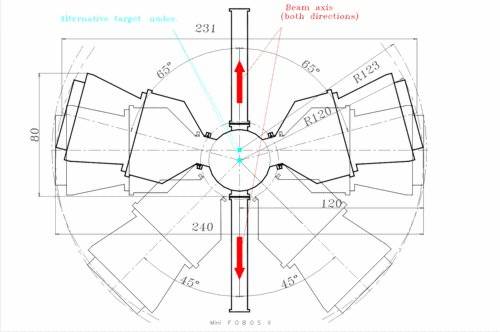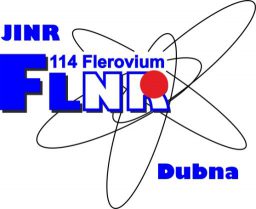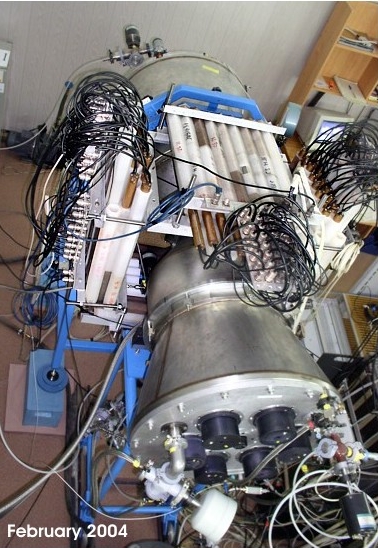“miniFOBOS” setup
At present the modified miniFOBOS setup is a combination of the double-arm time-of-flight – energy spectrometer assembled of standard modules of the FOBOS 4π spectrometer and a neutron bell of 3He counters. miniFOBOS spectrometer has a modular construction which enables to adapt it easily to a particular experiment. This feature turned out to be very useful in the experiments on search and study of Collinear Cluster Tripartition (CCT) of heavy nuclei. One of the main advantages of the FOBOS detector modules consists in independent measurement of the velocity vector, mass and charge for each fragment without any assumptions about the reaction mechanism. This makes the study of multibody decays identifiable by some missed mass possible.
The general idea of the MMF consists in using a small reaction chamber which can be then unique for each experiment and the basic universal system maintaining the detectors. The special mounting cones are used to join the rather large detectors with the reaction chamber (Figs.1, 2) Such a design benefits, in particular, in a multi-detector facility requiring a high efficiency fragment trigger. By means of such mounting cones one can easily build the high efficiency system joining six modules in the form of 3D-cross. The solid angle of an individual detector module amounts to 0.26 sr meaning flight-path of 50 cm.
“miniFOBOS” setup

Fig.1 Layout of the MMF spectrometer. Dimensions are given in cm.
miniFOBOS spectrometer modules are just standard FOBOS-modules.
Our spectrometer is currently equipped with the universal reaction chamber of 44 cm in diameter with the available arm-angles of 65˚, 90˚, 135˚ in the reaction plane (Figs.1). The direction of the beam can be changed thus increasing the number of possible opening angles of detected reaction products. Such a configuration of the spectrometer is well suited for study of heavy-ion induced reactions and for spontaneous fission as well. Although the flight path of 50 cm is an optimum due to a number of reasons, the geometry of the spectrometer can be changed if needed. The lowest flight path of approx. 25 cm is defined by the construction of the mounting cones (Figs.1, 2).


